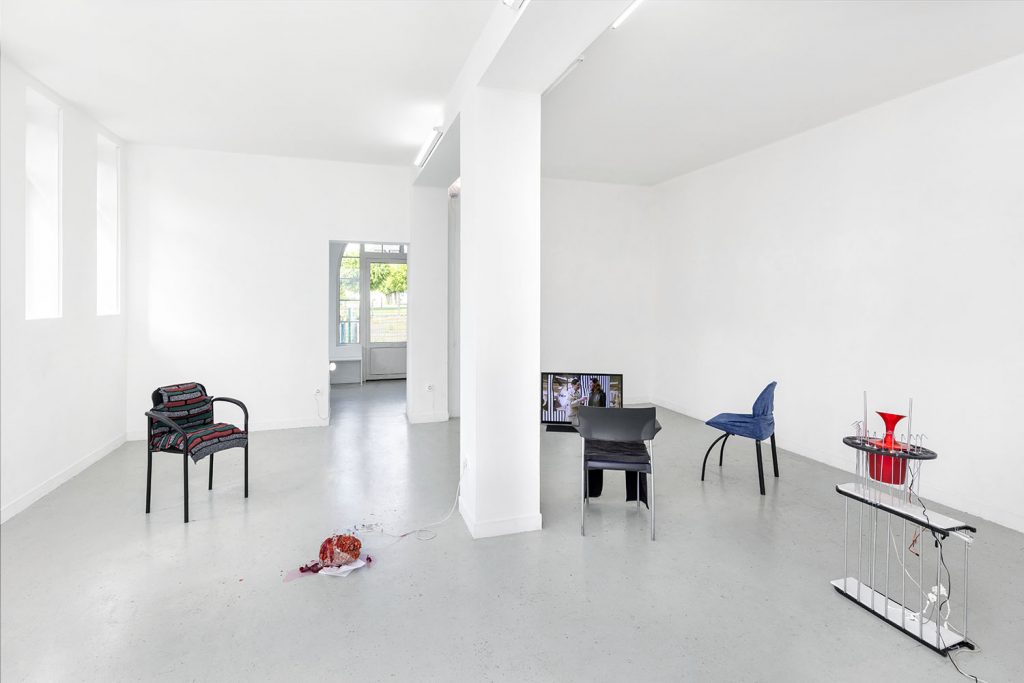

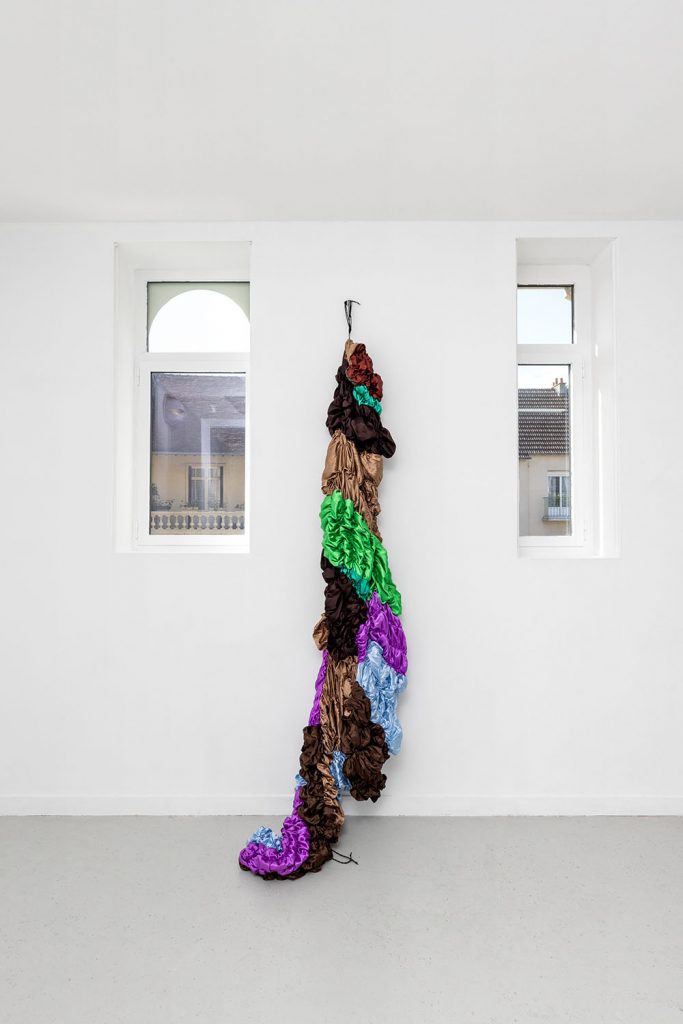
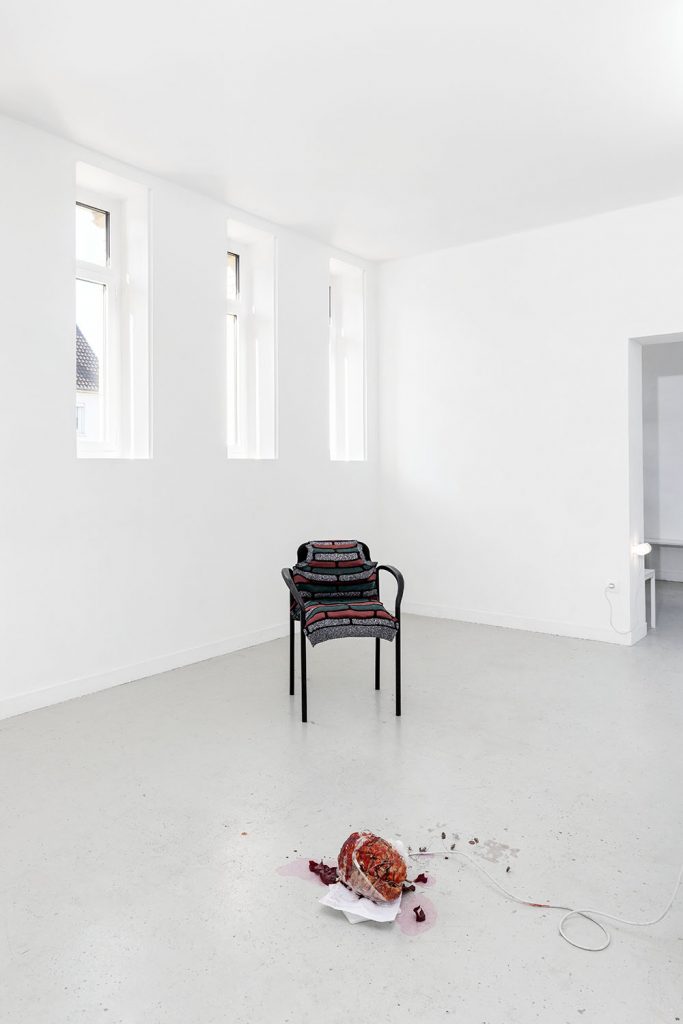
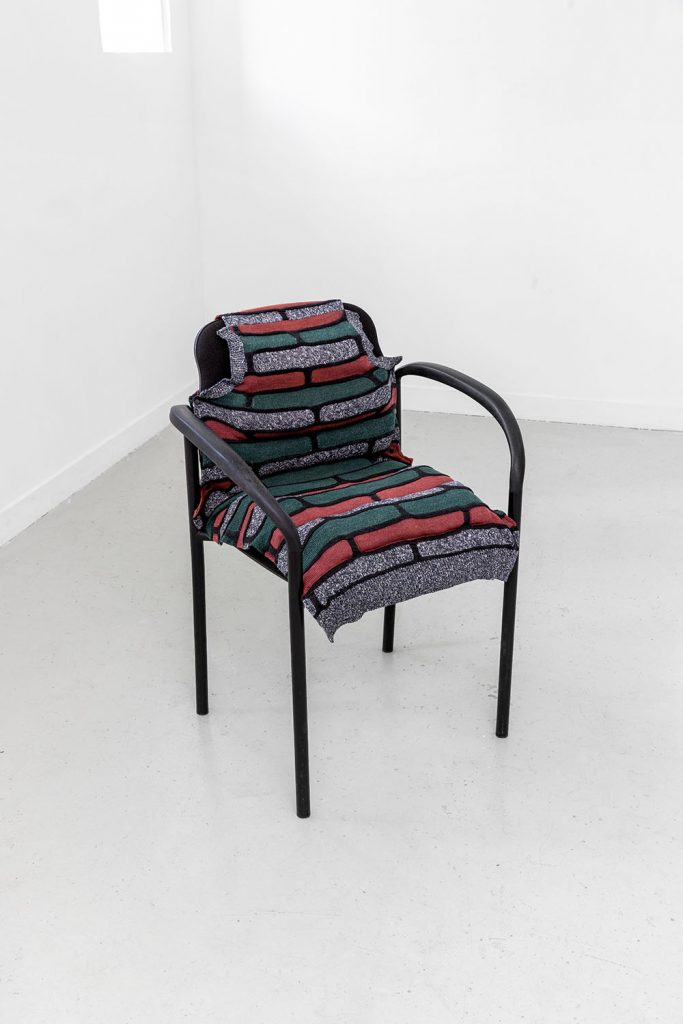
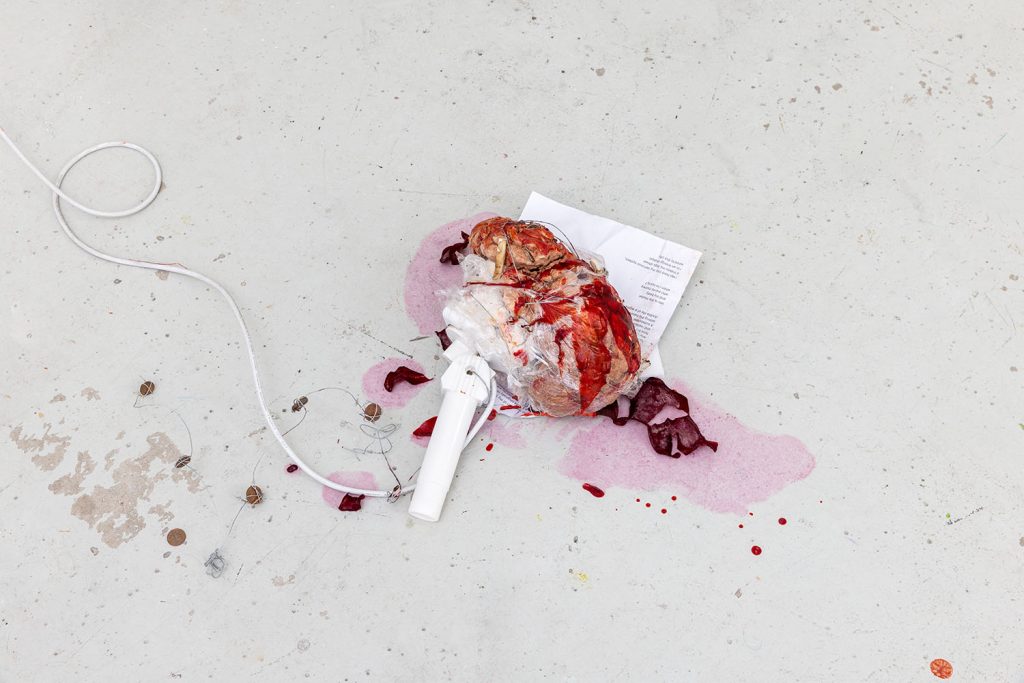

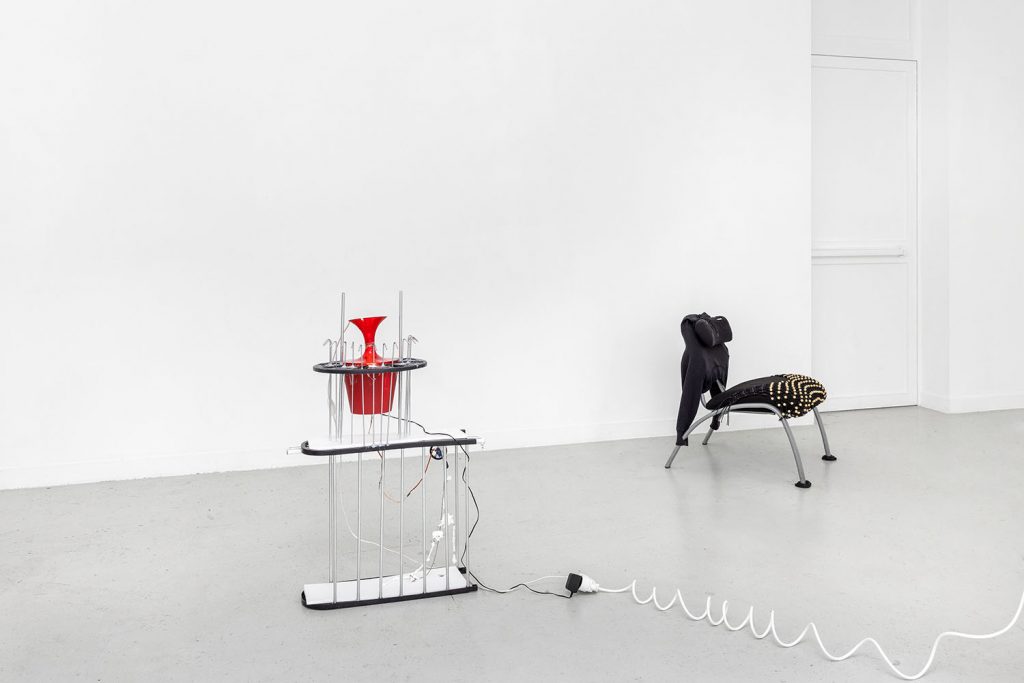

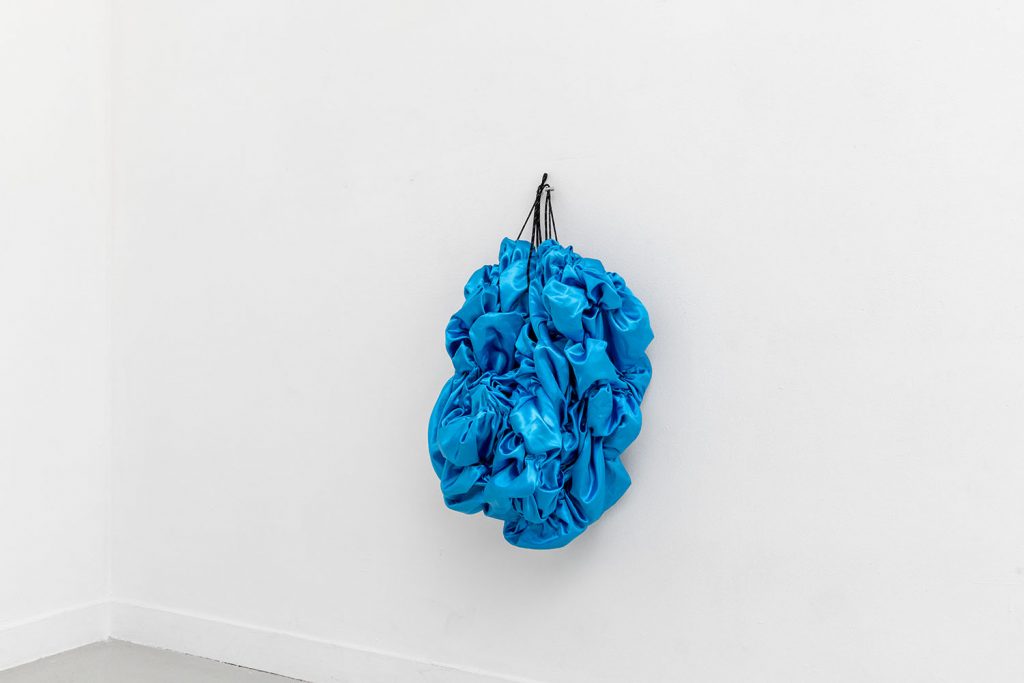
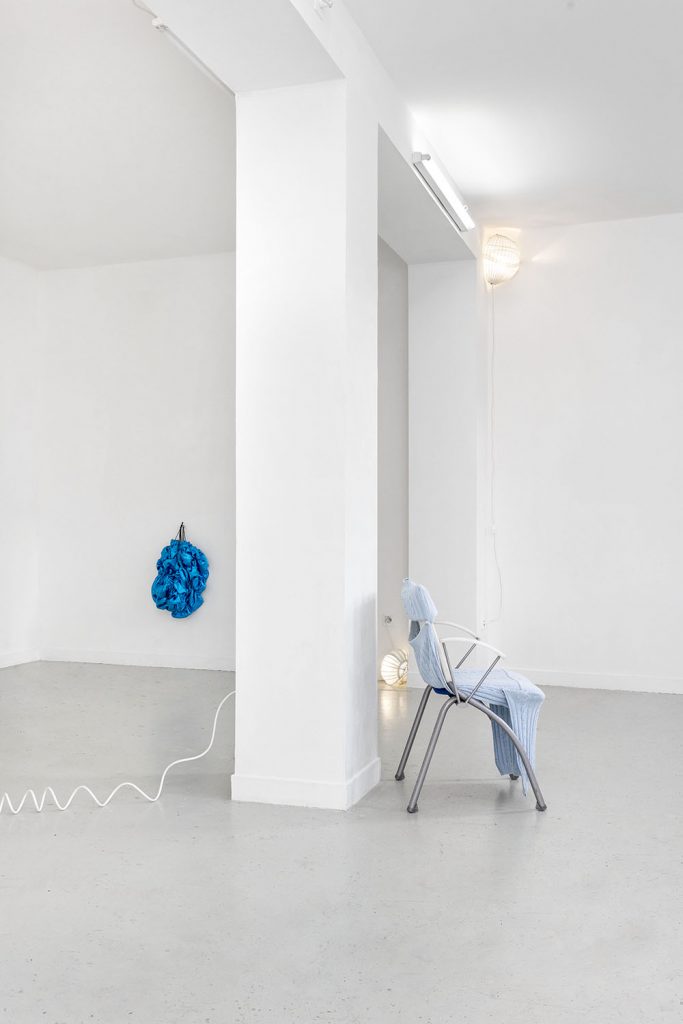
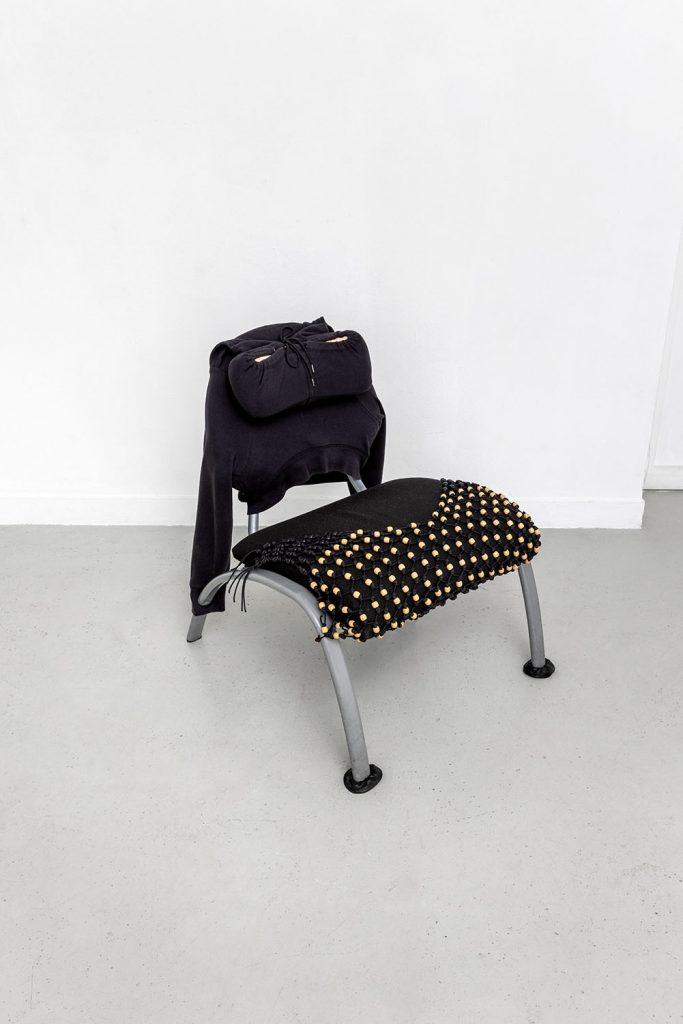
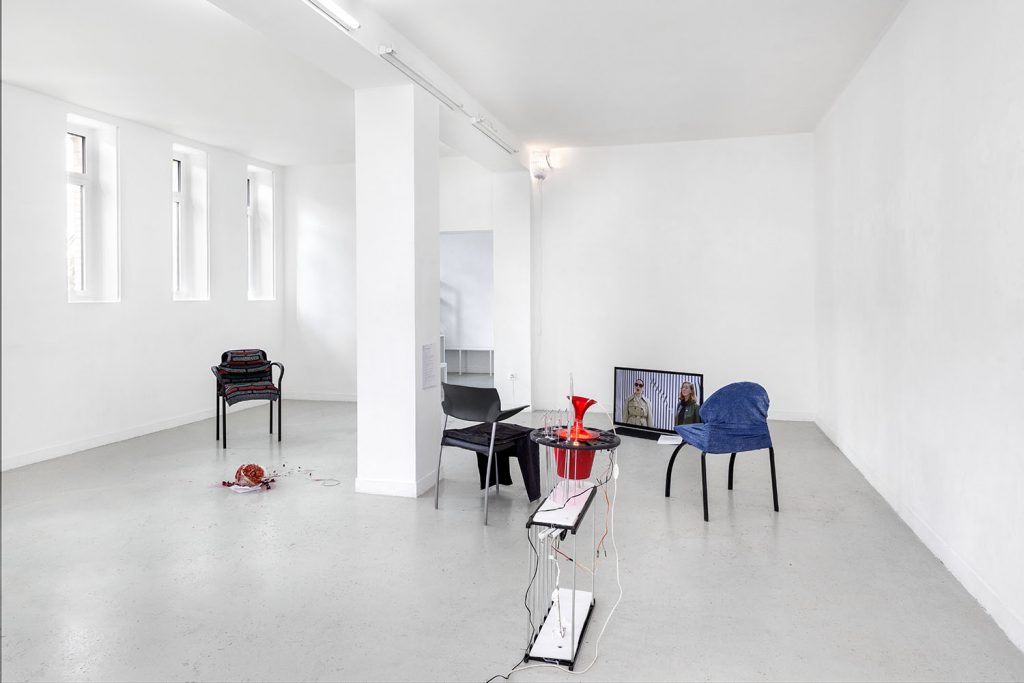

Un jour, un père meurt. Pour seul message, il laisse une lettre dans une commode. Malgré les recherches des enfants, la lettre n’est jamais retrouvée. A la place, la commode reste vide, sans explication. Elle continue à traverser les âges. Elle devient sans qu’on le sache l’objet d’un savoir jamais révélé, l’objet du secret. D’une génération à l’autre, l’histoire originelle de l’objet disparait mais ne cesse de nous accompagner. Ainsi, il y a dans nos existences des objets qui collent et qui restent accrochés à nos vies. Il y a des objets symboles chargés par la société (bijou de famille, vaisselle, cuillère en argent, vêtement, sacs à main). Il y a des objets qui annoncent des statuts, il y a des objets qui cachent leurs histoires. Il y a des objets salis par leurs usages, par les abus qu’ils ont permis. Ces objets collent à nos cœurs, à nos mains, parfois nous salissent, nous empêchent.
Sticky objects propose de revenir sur l’histoire des objets et la relation étroite qu’ils entretiennent avec les émotions en explorant leur apparition dans les arts visuels. S’appuyant notamment sur l’essai Happy Object de Sara Ahmed, l’exposition s’intéresse à la charge émotionnelle des objets : dégout, attirance, joie, tristesse. Dans cet essai, la sociologue anglaise démontre comment certains objets sont assignés à une émotion (bonheur ou malheur), en prenant l’exemple de l’accomplissement personnel à travers le mariage symbolisé par une bague. Sarah Ahmed tente de déconstruire la représentation normative du bonheur. La question des affects est devenue un sujet sociologique à part entière depuis plusieurs années, Sara Ahmed tout comme Frédéric Lordon interrogent la place des émotions dans la société. Chez Frédéric Lordon, les affects sont orientés par la société capitaliste pour répondre aux demandes économiques : tristesse poussant à la consommation et dépression poussant à l’inaction. Ces injonctions m’ont amenée à m’interroger sur la charge émotionnelle des objets qui circulent dans l’art. Les objets traversent les usages, ils deviennent œuvres, se figent dans des espaces d’expositions. Ils reviennent ensuite parfois pour toujours, parfois fugacement des objets collants. Sans jamais nous appartenir, ils nous hantent, ils semblent nous avoir dit quelque chose que nous continuons à entendre. Est-ce que les objets d’art auraient une faculté magique à résister aux injonctions émotionnelles qui leur sont faites en provoquant l’apparition d’émotions inattendues ?
Dans Sticky Objects, les éléments composants l’exposition proviennent principalement du vocabulaire esthétique propre aux arts vivants : marionnettes, objets de décor et maquettes habitent l’espace des Bains-Douches. Cette invitation à faire écho aux arts vivants est un clin d’œil à la figure de Piero Heliczer, constante présence du centre d’art. CluelesS, Fang Dong et Rafael Moreno proposent à partir d’objets de produire des sculptures qui deviennent des petits objets de design ou de théâtre. Hélène Carbonnel déconstruit les discours entendus pour n’en conserver que les erreurs et les balbutiements, comme pour faire entendre derrière ce qui n’est pas dit, ce qui doit être réellement entendu. Enfin, Frieder Haller nous emmène avec son nouveau film dans l’univers de personnages symboliques qui cherchent à s’extraire de leur nature diabolique dans un décor en carton-pâte.
Les objets produit par les artistes parlent, s’émancipent, s’activent. Ils cherchent d’autres moyens d’exister que celui du souvenir et de l’héritage. Car si les objets sont collants c’est en les plaçant ensemble, que peut-être une autre symphonie peut se faire entendre et que leur nature collante peut devenir une étrange et nouvelle peau à partir de laquelle nous pouvons nous transformer.
*
Hélène Carbonnel est née en 1989 à Paris. Elle est autrice, réalisatrice et programmatrice de podcasts, créations sonores et vidéos. Depuis 2017, elle travaille avec plusieurs studios et a notamment réalisé de nombreux Transferts. C’est à partir de la matière de 4 épisodes qu’elle a réalisé Trash Talk, l’œuvre sonore présentée dans l’exposition.
cluelesS le duo de designers composé de Saloméja Jacquet et Clara Stengel – développe un répertoire d’objets à usage quotidien destinés à résoudre des problématiques du réel en créant un monde légèrement décalé du nôtre. « Être dans son monde » est peut-être la manière la plus juste d’interpréter le mot « clueless ». Contournant les traductions péjoratives, qui pourraient désigner quelqu’un·e d’ignorant·e, « clueless » devrait plutôt être entendu comme la position de celle ou celui qui défie la réalité. (extrait d’un texte de Katia Porro pour l’exposition Loud Object à In Extenso, Clermont Ferrand en 2022)
Clara Stengel est née en 1989 à Paris. Après ses études à l’ENSBA (Paris), elle obtient un CAP en ébénisterie en 2015. Avant de co-fonder cluelesS, elle a exposé son travail en France et à l’international.
Saloméja Jacquet est née en 1994 à Paris. En 2017, elle est diplômée de la HEAD (Genève) en design de mode. Elle a notamment travaillé avec des designers tels que Bless et Mariel Manuel avant de co-fonder cluelesS.
Frieder Haller est né en 1987 à Fribourg-en-Brisgau. Il a participé au programme de résidence De Ateliers à Amsterdam de 2017 à 2019. Il a étudié la philosophie à l’université de Leipzig de 2008 à 2011 et la photographie à l’université des arts Folkwang d’Essen de 2011 à 2016. En avril 2023, il présentera sa première exposition personnelle en institution au Kunstverein Harburger Bahnhof à Hambourg. Il est co-fondateur de l’espace indépendant New Bretagne/Belle à Essen. Depuis 2018, il dirige l’espace d’artistes Root Canal à Amsterdam. En 2021, il a cofondé l’espace communautaire Cittipunkt à Berlin.
Fang Dong est né en 1991 en Chine. Elle vit et travaille actuellement à Bordeaux. Son nom signifie le sens parfumé en chinois. Ces deux caractères sont composés d’idéogrammes évoquant des herbes carrées et lourdes ; elle a pour autre pseudonyme heavy herbe (h2E3). Ses pièces, entre l’art et le design, offrent à nos sens une pluralité d’échelle, c’est un monde tactile, sensitif en perpétuel mouvement.
Rafael Moreno est né·e en Colombie en 1993, depuis sept ans iel vit et travaille à Paris. Iel à fait ses études aux Beaux-Arts de Paris puis à L’EHESS. Son travail a été récemment présenté à la June Art Fair (Suisse), Treize (Paris), à la galerie Valeria Cetraro (Paris), à Établissement d’en Face (Bruxelles) et à la galerie Gaudel de Stampa (Paris). À travers l’installation, la performance et le texte, Rafael Moreno propose des narrations fictionnelles autour de la relation entre le corps humain, les développements technologiques et les contextes socio-économiques actuels. Iel travaille souvent à partir d’objets trouvés choisis pour leur symbolique. Le collage et la manipulation de ces symboles lui permettent d’ouvrir et de développer les espaces de réflexion qui ont pour ambition d’aboutir à la déconstruction des rapports de domination culturelle.
One day, a father dies. The only message he leaves behind is a letter in a chest of drawers. Despite the search carried out by his children, the letter is never found. Instead, the chest of drawers remains inexplicably empty. It continues to exist, down through the years. It becomes, without anyone realizing it, the object of a kind of knowledge that is never revealed, the object of the secret. From one generation to the next, the object’s original story vanishes yet never ceases to be with us. Thus in our existence there are objects that stick and remain attached to our lives. There are symbolic objects that are infused by society (family jewels, dinnerware, a silver spoon, an article of clothing, handbags). There are objects that proclaim one’s status, there are objects that conceal their stories. There are objects soiled by their uses and by the abuses they made possible. These objects stick in our hearts and to our hands, occasionally dirtying or impeding us.
The show Sticky objects offers viewers a look back over the history of objects and their close relationship to our emotions by exploring their appearance in the visual arts. Based in particular on Sara Ahmed’s essay “Happy Object,” the show focuses on the emotions that objects are loaded with, disgust, attraction, joy, sorrow, and so on. In her essay, the English sociologist demonstrates how certain objects are assigned an emotion (happiness or sadness), taking the example of the personal accomplishment of marriage symbolized by a wedding ring. Ahmed tries to deconstruct the normative representation of happiness. The question of affects has been a full-fledged subject of sociology for several years now, and like Frédéric Lordon, Ahmed interrogates emotions’ place in society. In Lordon’s work, affects are steered by capitalist society to correspond to economic demands, sadness encouraging consumption and depression encouraging inaction. These injunctions led me to question the emotional burden of objects circulating in art. Objects run through uses, they become works of art, frozen in the space of the exhibition. They then come back, sometimes forever, sometimes fleetingly, sticky objects. Without ever belonging to us, they haunt us and seem to have spoken to us about something we continue to hear. Would art objects have a magical faculty for resisting the emotional injunctions addressed to them by occasioning the appearance of unexpected emotions?
In Sticky Objects, the elements making up the show mainly come from the esthetic vocabulary that’s peculiar to the living arts. Puppets, decorative objects, and scale models fill Les Bains-Douches. This invitation to make the connection with the living arts is a sly nod to the figure of Piero Heliczer, a constant presence in the art center. CluelesS, Fang Dong, and Rafael Moreno use objects to produce sculptures that become small designer objects and objects for the theater set. Hélène Carbonnel deconstructs the kinds of talk that are heard, only to retain the errors and stuttered bits, as if to bring out what is left unsaid, what needs to be truly heard. Finally, Frieder Haller, with his new film, takes us to a world of symbolic characters in a cut-out setting who are looking to escape their diabolical nature.
The objects produced by the artists speak out, break free, get down to work. They seek other ways to exist than what memory and heritage permit. If objects are indeed sticky, by being placed together perhaps another symphony may be heard, and their sticky nature can become a strange and new skin from which we can transform ourselves.
*
Hélène Carbonnel was born in 1989 in Paris. She is an author, director, and programmer of podcasts, sound artworks and videos. Since 2017 she has been working with several studios and has created many Transferts. Drawing on 4 episodes for her raw materials, she produced Trash Talk, the sound piece featured in the present exhibition.
The designer duo cluelesS, made up of Saloméja Jacquet and Clara Stengel, has been developing a repertory of objects for day-to-day use meant to resolve problems in reality by creating a world that is slightly out of synch with our own. “To be in one’s world” is perhaps the most accurate way of interpreting the word “clueless.” Skirting the pejorative connotations of the word, which can apply to someone who is ignorant, “clueless” should rather be understood in the sense of someone who defies reality. (extract from a text by Katia Porro for the exhibition Loud Object at In Extenso, Clermont Ferrand in 2022)
Clara Stengel was born in 1989 in Paris. After graduating from ENSBA (Paris), she took a CAP in cabinetmaking in 2015. Before cofounding cluelesS, she exhibited her work both in France and internationally.
Saloméja Jacquet was born in 1994 in Paris. In 2017, she graduated from HEAD (Geneva) with a degree in fashion design. She worked with designers like Bless and Mariel Manuel before cofounding cluelesS.
Frieder Haller was born in 1987 in Freiburg im Breisgau. He was part of De Ateliers, a residency program in Amsterdam, from 2017 to 2019. He studied philosophy at the University of Leipzig from 2008 to 2011 and photography at the Folkwang University of the Arts in Essen from 2011 to 2016. In April 2023, he will present his first solo show at an art institution, the Kunstverein Harburger Bahnhof in Hamburg. He is the cofounder of the independent art space New Bretagne/Belle in Essen. Since 2018, he has directed the artists’ space Root Canal in Amsterdam. In 2021, he cofounded the community center Cittipunkt in Berlin.
Fang Dong was born in 1991 in China. She lives and works in Bordeaux. Her name supposedly means “fragrant sense” in Chinese. These two characters are made up of ideograms referring to “square heavy herbs”; her other pseudonym is Heavy Herbe (h2e3). Somewhere between art and design, her pieces offer our senses a plurality of scales. It is a world that is tactile, sensory, and in perpetual motion.
Rafael Moreno was born in Colombia in 1993. They have lived and worked in Paris for seven years now. They studied at the Beaux-Arts de Paris and EHESS. Their work was recently shown in the June Art Fair (Switzerland), Treize (Paris), the Valeria Cetraro Gallery (Paris), Établissement d’en Face (Brussels), and the Gaudel de Stampa Gallery (Paris). Through installations, performances, and texts, Moreno offers fictional narratives on the relatiohship between the human body, technological developments, and current socio-economic contexts. They often work with found objects selected for their symbolism. Collage and manipulating these symbols allow Moreno to open and develop spaces for reflection that aim to deconstruct connections based on cultural domination.